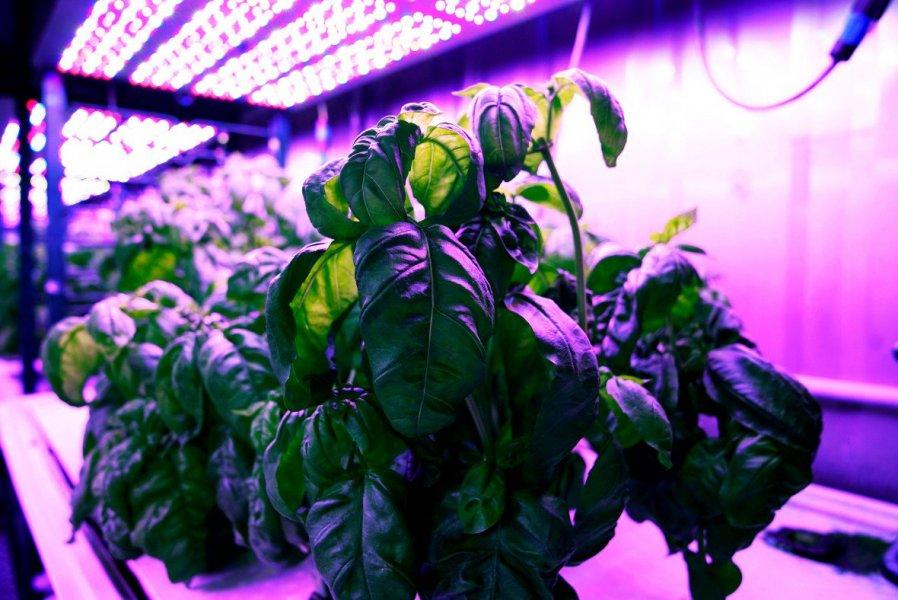
Researchers in MIT’s Open Agriculture Initiative grow basil under controlled environmental conditions to study how taste and other features are affected. Credit: Melanie Gonick
Water, sunlight, nutrients—these ingredients are essential for plant growth. However, these basic ingredients don’t always yield the ideal plant. In fact, optimizing these variables is complicated, causing some plants to fall flat on flavor.
Machine learning can help.
In a study published in PLOS ONE, researchers from Texas Computer Science and MIT’s Media Lab modified these variables and others with the goal of producing basil with stronger flavors. By doing this, researchers hoped to understand how to both improve and automate farming.
Unlike many other farming optimization efforts, this process didn’t involve genetic modification. Instead, researchers combined cyber-agriculture, metabolomic phenotype (chemotype) measurements, and machine learning to yield a crop of flavorful basil.
Flavor might seem like a minor factor in optimizing food production, but according to researchers, the molecules that determine flavor in plants are typically correlated with positive health benefits, carrying antioxidant, antimicrobial, and anti-inflammatory properties. However, as nutrient quality in produce has decreased over time, so has flavor.
“Plants have gotten bigger and they don’t have all the nutrients they used to have,” said Risto Miikkulainen, a TXCS professor and a researcher in the project. “Our research has shown that it doesn’t have to be that way.”
Researchers manipulated variables in retrofitted shipping containers that allowed them to control conditions like sunlight, temperature, and humidity. If you’ve heard of urban or vertical farming, this method is similar.
They found that basil had optimal flavor when exposed to visible light for 24 hours a day—an unexpected conclusion considering few plants are naturally exposed to this much sunlight. Miikkulainen attributes this surprising discovery to the absence of human biases.
“Nature is no longer really relevant in this sense” Miikkulainen said. “We discovered basil doesn’t need to sleep, so if you take your constraints from nature, they might not really be that useful.”
Miikkulainen and his colleagues came to this conclusion with the help of machine learning. “Machine learning doesn’t have the same biases as humans,” he said.
While this research may excite pesto-lovers, it has even greater implications for the future of food security. According to researchers, cyber-agriculture has important applications in adaptation to climate change and medicine. Using cyber-agriculture, we can hopefully one day create plants that are resistant to changing climate conditions.
Furthermore, Miikkulainen said this machine learning model will allow us to determine the efficacy of different combinations of variables without wasting resources or time.
“In many optimization tasks, what you’re trying to discover is very expensive to evaluate. In the case of basil, it’s a minimum of three weeks that we have to wait to discover if the recipe is effective (without our model)” Miikkulainen said. But with this surrogate model, farmers can one day determine which conditions yield the desired produce simply by asking the model.
“We can predict pretty well what happens when you have a new recipe, and we tested something like a million recipes with the surrogate, but only a few hundred with the growth experiments.” Miikkulainen said.
The future of food production requires innovation. Researchers at TXCS and MIT are working to meet this need through exciting new technology that allows us to envision the future of food—intelligent computers and big flavor.



